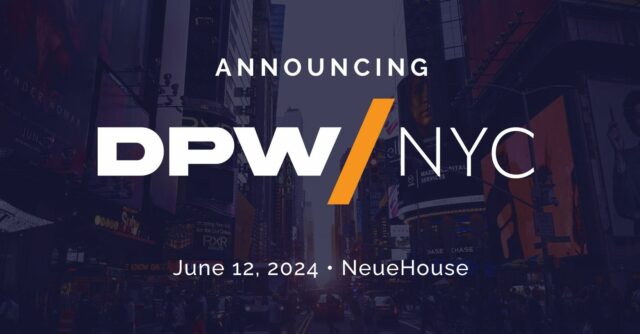This week’s exclusive podcast features SAP Ariba’s Chief Digital Officer Dr. Marcell Vollmer who examines the integral elements to a successful procurement transformation and how it aligns with, and helps steer, a company’s strategic aims
Procurement is undergoing a revolution. No longer a reactive back-office function, designed to keep costs down, procurement is evolving into a vital, strategic aid that provides the c-suite with extensive insights and forecasts that affect the entire business. The chief procurement officer is now a vital cog in the corporate hierarchy who helps to drive value and to steer the business forward.
With any revolution, there are revolutionaries, and SAP’s Chief Digital Officer, Marcell Vollmer is one such figure. Vollmer has helped to forge a new identity for the CPO during his time at SAP. Vollmer’s current role at SAP, the global advisory and strategy, is helping its clients define and execute digital transformation strategies, including the procurement and supply chain functions. “Digital transformation is about focusing on a vision for the future,” he explains.
So, where does a procurement transformation begin? “I think the most important thing for digital transformation is to focus on the structure, the organisation, the process side, and then finally on the systems,” Vollmer tells us, from his Munich office. “Oh, and don’t forget the people and the change management on the journey, who are key to the overall success.” It’s no surprise that many businesses are preparing for the future as everyone wants to understand, learn and adapt to a constantly shifting landscape. And although procurement is emerging into a progressive role, Vollmer is quick to point out the volatility of technological change. Our CEO Bill McDermott says: ‘Change has never moved as fast as now, and it will never move as slow as today.’”
“Part of my role is helping them to cluster a little bit and structure the agenda because the change is so fast. 50% of all the companies on the Fortune 500 list for the year 2000 are no longer on that list. The speed (of change) is tremendous. Change has never moved this fast, and it will never move this slowly again, and so everyone is currently concerned a little bit and wants to prepare for the future.”
Vollmer is passionate regarding the massive potential of strategy-driven procurement as part of an overall transformation and is very much engaged in client-facing work within the procurement space. “Purchasing was not necessarily seen as a value contributing function and was viewed as the operational side, transacting, getting what the business needs,” he tells us. “And this has fundamentally changed. Procurement today has a more important role in the business, to make procurement awesome.”
The user experience
The user experience is absolutely key amid a digital transformation. Modern procurement systems have provided CPOs and their teams with the tools to transform the operations and function of their department, but there’s more to making procurement than just the tools. “Everyone expects an ‘Apple easy’ or a ‘Google fast’ experience when you interact with a system,” Vollmer explains. “(Procurement) needs to be an awesome experience and it needs to have a great user experience, but it also needs to provide all the insights needed, that you can get from the spend data,” he explains. “You have to do the demand planning and aggregation to really get everything for the best possible price depending on the quality and timings you need. The golden time in procurement can be optimised and is a great experience for everyone engaging and interacting with the procurement function.”
Many procurement and supply chain strategists and consultants are seeing a massive sea-change in the CPO’s role, which is seen by many as a stepping stone into the role of CEO. This is something Vollmer also endorses. “Look at Tim Cook (CEO Apple); he was a chief supply chain officer,” says Marcell. “Procurement was reporting into his function, and what has he done? Not only is he now the CEO, but he has also contributed by inventing the Gorilla Glass for the iPhone to a great product experience. In the meantime, we have more than 2.2 billion iPhones sold. So, wow, there really is something that comes after procurement.”
Indeed, Vollmer was a CPO. And a chief operating officer. Currently, Vollmer is a chief digital officer. As Vollmer has demonstrated, procurement is evolving into a talent pool. “It’s a place where people want to work, because that’s my experience. When I talk to other CPOs, it is the most beautiful place you can be. You understand the business model and really know what the business is doing. You can see areas of the business that represent opportunities. ‘Oh, that’s an area where I want to be next in my career.’”
For procurement to fully transform the increasingly redundant perceptions it creates, it needs to work a little bit better on the marketing side, according to Vollmer. “Starting as a trainee buyer, to potentially make it to a CPO, is a model which will no longer exist in the future,” he explains. “The number one reason is that we are tending more towards project-based work, a gig economy, to use this term. Millennials and Generation Z want to get more experience. They are not necessarily saying, ‘I want to work for a great company and procurement is a good spot for me to start, and most likely end, my career.’”
Vollmer is clearly excited about the future and sees procurement sat at the forefront of business transformation. “We are at the very beginning of the fourth industrial revolution. We are also at the beginning of a lot of technologies and machine intelligence is the most disruptive technology. I believe that this is a time of change and we need to prepare ourselves. And I believe procurement will have a seat at the table of modern businesses. Artificial intelligence is changing the world in the same way the steam engine or electricity did. And machine learning is basically a part of artificial intelligence. What’s currently becoming part of the business is internet off syncs and connected devices, which are being implemented more and more on the business side. Everything is related to automation in a broader sense and to analytics, including big data and predictive analytics. But then also bridging it back to the machine intelligence; the prescriptive guidance, using not only descriptive information, not only predicting something based on historical data, but also using other sources like weather forecasts. We have seen, for example, that Ferrero was heavily impacted one year back, a little bit more than one year back, when the hazelnut was impacted by the dry weather. And this is really where you see the connection between the different technologies, being absolutely key.”
When it comes to procurement transformation it’s vital to have a vision. What is the future for your function? Vollmer has a very distinct notion of what that vision should be “And this is not limited to procurement,” Vollmer explains. “I would say that this is part of all discussions regarding the future of the back office. Therefore, the digital transformation starts with a vision. What do you really want to do with your function? How do you want to create value? On the procurement side, as in finance, HR, or IT, you can see what’s coming with cloud, with the hyperscalers, and the change in IT and how we consume software using cloud solutions. It’s a new business model. And therefore, I believe that you need to think about how you want to define the future for your function.”
A transformation is all well and good, but how do you create value? According to Vollmer, this follows on from the vision. “You start with the structure,” he explains. “Start with the organisational side. What do you want to do? Which functions might you need? Which functions do you have already and might get impacted by automation or by machine intelligence and other disruptive technologies? And therefore, derive from that; think about the process side. How can you really help the business to be faster, to have fewer hours in the different processes, to be predictive in what is needed and also manage risk and secure a sustainable supply chain. This will really drive value for your organisation.”
Connecting with internet offsyncs and certain parts of the production of the supply chain is definitely adding value. “When you see automation with robotic processes helping your transactional processes become more automated, you can see the next level of machine learning. So, it’s not only the robotics process automation, which is just comparing a with b, and then if b is correct, going to c, and then to d and so on. It is also learning, ‘Oh wow, there is a lot that is happening when I see this in d happening. Basically, here are the root causes and this is something that can be done, that is most likely happening, and can be already integrated.’”
Vollmer is a big fan of concrete use cases to get quick wins during transformative processes. “You are not joining a journey for the next two, three, five years. In the past, big IT implementations were lasting. I think that time is over. You need to be much faster today as the change is very rapid and you need to prepare yourself for it. A lot of people fear the change, the speed, and the disruption and what might come and how their jobs might get impacted. I always say: ‘Yes, there is a high risk that your job will be changing. But look back at the past 10 years. How many times has your job already changed?’ At the World Economic Forum in Davos, this January, it was reconfirmed that until 2022, artificial intelligence will create 58 million additional jobs. Disruptive technology will change your job, but on the other side it will also provide great new opportunities. So many new jobs are getting created and there will also be a big shift from task. So technical operational tasks might disappear, but strategic value-adding tasks might show up, including everything related to analytics.”
Change management
The biggest challenge of any transformation involves the people. Change management represents a massive cultural shift in the workplace and it’s vital you get it right. “I always say, don’t forget the people. Because we all know we have limitations in the team science we have today. Even as procurement creates hard savings for example, more people could potentially save more money. But is procurement in the situation where it can get new resources or new talent? Most likely not. Whatever you do, people are the most valuable assets in your organisation. So be careful in how you define and drive your transformation, because you need the people to be successful. No one is smart enough to run everything on her or his own. It’s a team approach and so think about the people.”
So, what makes for a good CPO? “A really good CPO, understands the business model and can collaborate with the right groups as a business partner to really create value and gets a seat at the table of the business by providing everything that is needed, including all the new innovative solutions or products the company can use to be successful in the future. It is also about creating and developing a great team, which can contribute and drive the value-generating activities. So, good leadership skills are absolutely mandatory. That’s what a CPO needs, to be successful in the future.”











